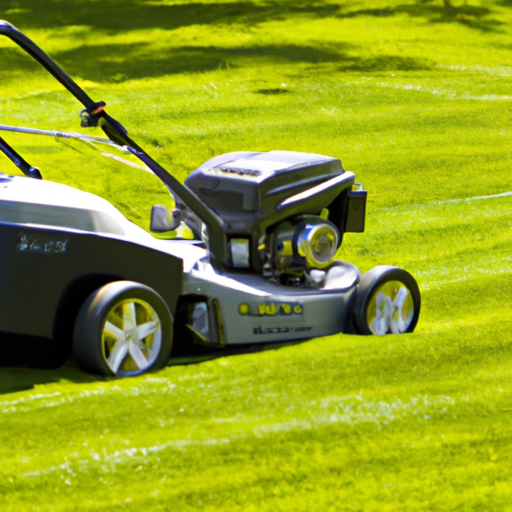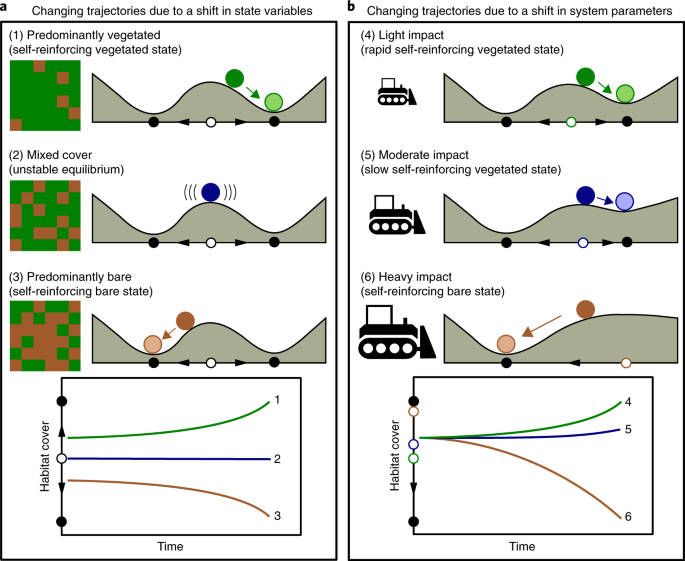Imagine effortlessly maneuvering the lush green corners of your yard with a zero-turn lawn mower specially designed for tight spaces. This article will guide you in selecting the best zero-turn lawn mower that not only meets your mowing needs but also conquers those hard-to-reach corners with precision. Get ready to transform your routine chore into an enjoyable experience as you effortlessly glide around obstacles and effortlessly create clean, beautifully trimmed edges. Say goodbye to the frustrations of traditional mowers and get ready to embrace the joy of perfectly manicured corners.
Factors to Consider
Size of the Lawn
When choosing a zero-turn lawn mower, the size of your lawn is an important factor to consider. A smaller lawn may require a compact model with a narrower cutting deck, while a larger lawn will benefit from a wide-area model with a wider cutting deck. It’s essential to accurately assess the size of your lawn to ensure you choose a mower that is suitable for the task at hand.
Type of Terrain
The type of terrain in your yard is another crucial factor to consider. If you have a flat or slightly sloped lawn, most zero-turn mowers will be able to handle the job effectively. However, if you have steep or uneven terrain, you may need to look for a mower with features specifically designed for such conditions, such as all-wheel drive for better traction. Additionally, if your yard has many obstacles or tight corners, you’ll want a mower that can maneuver easily around them.
Cutting Width
The cutting width of a zero-turn lawn mower refers to the size of the deck and determines how wide of a path the mower can cut with each pass. The cutting width you choose should depend on the size of your lawn and the efficiency you desire. Residential lawns typically require cutting widths between 42 and 54 inches, while commercial properties may benefit from wider cutting decks. Consider the time and effort it will take to mow your lawn when deciding on the appropriate cutting width for your needs.
Mower Deck Construction
The construction of the mower deck can impact its durability and performance. Zero-turn mowers typically have decks made of either steel or aluminum. Steel decks are known for their strength and resistance to damage, making them suitable for rough or rocky terrains. Aluminum decks, on the other hand, are lighter and more resistant to rust. Additionally, you’ll come across two types of deck construction: stamped and fabricated. Stamped decks are more common and cost-effective, while fabricated decks are generally sturdier and better suited for heavy use.
Engine Power
Engine power is an important consideration when selecting a zero-turn lawn mower. The horsepower and torque of the engine determine how efficiently the mower can cut through grass. Residential lawns generally require engines with lower power ratings, while larger properties or thick grass may necessitate more powerful engines. Additionally, consider the fuel type options available, as well as the reliability and performance of the engine. Opting for a model with a hydrostatic transmission can provide smoother operation and better control.
Maneuverability
One of the key advantages of zero-turn mowers is their excellent maneuverability. These mowers have a zero-turn radius, allowing them to turn on the spot, making them highly efficient for mowing around obstacles and tight corners. When selecting a zero-turn mower, consider the type of steering system it employs. There are various steering systems available, such as lap bar controls or steering wheels. Choose the system that you find most comfortable and easy to use. Additionally, assess the ease of turning and reverse operation to ensure the mower meets your maneuverability needs.
Comfort and Ergonomics
Mowing your lawn can be a time-consuming task, so it’s important to ensure that your zero-turn mower provides a comfortable and ergonomic experience. Look for models with a well-designed and adjustable seat that provides adequate support. Consider the vibration and noise levels of the mower, as excessive vibrations and loud noises can cause discomfort and fatigue. Evaluate the layout and accessibility of the operator controls, as well as the overall ease of access and maintenance of the mower.
Attachments and Accessories
Many zero-turn mowers offer a range of attachments and accessories to enhance their versatility and functionality. These can include bagging systems for collecting grass clippings, mulching kits to finely shred the grass, and tow-behind carts for hauling equipment around your yard. Consider the attachments and accessories that are available for the zero-turn mower you are considering and assess whether they would be useful for your specific needs.
Price Range
Price is always an important factor to consider when making any purchase, and zero-turn mowers are no exception. The price range for these mowers can vary significantly depending on factors such as the brand, features, and quality of construction. It’s essential to determine a budget that suits your affordability while also taking into account the specific features and capabilities you require. Remember to consider the long-term value and potential cost savings that a higher-quality mower may provide.
Warranty Coverage
Lastly, it’s crucial to review the warranty coverage offered by the manufacturer of the zero-turn mower. A reliable warranty can provide peace of mind and protect your investment. Consider the length of the warranty and the coverage it offers for different components of the mower. Additionally, check if there are authorized service centers in your area to ensure any potential repairs or maintenance can be easily addressed.
Understanding Zero-Turn Technology
What is a Zero-Turn Lawn Mower?
A zero-turn lawn mower is a type of riding mower that is designed for maximum maneuverability. What sets it apart from conventional mowers is its ability to make a zero-degree turn radius, meaning it can turn in place without needing to make wide, time-consuming turns. This makes zero-turn mowers incredibly efficient for navigating around obstacles and mowing in tight corners, making them an ideal choice for large and complex landscapes.
Advantages and Disadvantages
Zero-turn mowers offer several advantages over traditional mowers. Their exceptional maneuverability allows for faster and more precise mowing, saving time and effort. The zero-turn radius also means you can effectively cut grass along edges and around obstacles, eliminating the need for additional trimming or edging. However, it’s worth noting that zero-turn mowers may not be as well-suited for hilly or uneven terrains, as their design prioritizes maneuverability over stability.
How Does a Zero-Turn Mower Work?
The unique maneuverability of zero-turn mowers is made possible by their independent wheel motors. Each rear wheel has its own motor, allowing for individual control and power distribution. By operating the steering controls, which are usually located as levers or steering wheels, you can vary the speed and direction of each wheel independently. This differential speed control allows the mower to pivot on one wheel, enabling the zero-turn capability.
Types of Zero-Turn Mowers
There are two main types of zero-turn mowers: lap bar models and steering wheel models. Lap bar models have controls that resemble handles on either side of the seat. Pushing one handle forward and pulling the other back controls the speed and direction of each wheel. Steering wheel models, on the other hand, have a traditional steering wheel that allows for smoother and more intuitive control. Each type of zero-turn mower has its own set of advantages and ergonomic considerations, so choose the one that best suits your preference and comfort level.
Choosing the Right Size
Assessing Your Lawn’s Size
Before choosing a zero-turn mower, it’s important to accurately assess the size of your lawn. Take measurements of both the entire area and any irregularly shaped sections to get an accurate estimate. This will help you determine the appropriate cutting width for your needs and ensure that you choose a mower that is both efficient and effective in mowing your lawn.
Deck Width Considerations
The cutting deck width of a zero-turn mower directly impacts the speed and efficiency of mowing. A wider cutting deck allows for more grass to be cut with each pass, increasing the speed at which you can complete the task. However, it’s essential to strike a balance between speed and maneuverability. A very wide cutting deck may limit the mower’s ability to navigate tight corners or obstacles, so consider the layout of your lawn and the presence of any potential obstacles when selecting a deck width.
Compact Models for Smaller Yards
If you have a smaller yard, compact models of zero-turn mowers are an excellent choice. These models typically have narrower cutting decks, making them more agile in confined spaces. Compact mowers are also easier to store and transport, making them ideal for homeowners with limited storage options or those who need to maneuver through narrow gates or pathways.
Wide-Area Models for Larger Lawns
For larger lawns, wide-area models with broader cutting decks are preferable. These mowers cover more ground with each pass, reducing the time and effort required to complete the mowing task. Wide-area models are particularly useful for commercial properties, sports fields, or expansive residential landscapes. However, it’s important to ensure that your lawn’s layout allows for the maneuverability of a wide-area mower, as they may struggle in tight corners or heavily obstructed areas.
Evaluating Terrain Conditions
Flat or Slightly Sloped Lawns
Most zero-turn mowers are well-suited for flat or slightly sloped lawns. Their design and maneuverability allow for efficient mowing on even terrains. However, it’s still important to assess the specific degree of slope on your lawn. If you have slightly steeper slopes, selecting a mower with all-wheel drive can provide better traction and stability. Additionally, be mindful of any potential erosion or wear that may occur when turning on slopes, as the zero-turn maneuver may cause more stress on the grass.
Steep or Uneven Terrain
If you have a yard with steep or uneven terrain, there are specific considerations to keep in mind when selecting a zero-turn mower. Look for models with features such as all-wheel drive or larger rear tires, as these can improve traction and stability on challenging terrains. Some mowers also offer features like built-in suspension or anti-scalp wheels to help maintain an even cut on uneven ground. It’s important to choose a mower that can handle the demands of your specific terrain to ensure efficient and safe operation.
Obstacles and Tight Corners
One of the key advantages of zero-turn mowers is their ability to maneuver around obstacles and tight corners. When evaluating terrain conditions, consider the presence of any obstacles or features that may impede your mowing path. Examples include trees, flower beds, rocks, or other fixed objects. If your lawn has many obstacles, prioritize a mower with excellent maneuverability and a compact size. This will allow you to navigate around obstacles with ease and ensure an evenly cut lawn.
All-Wheel Drive or Rear-Wheel Drive
The choice between all-wheel drive and rear-wheel drive depends on the type of terrain you have. All-wheel drive mowers provide better traction in challenging conditions, such as steep slopes or wet grass. They distribute power to all wheels for improved stability and maneuverability. Rear-wheel drive mowers, on the other hand, are generally more affordable and suitable for flat or slightly sloped lawns. Consider the specific terrain and conditions you’ll be mowing on to determine the best drive system for your needs.
Determining Cutting Width
Impact on Efficiency and Mowing Time
The cutting width of a zero-turn mower directly affects its efficiency and the time it takes to mow your lawn. A wider cutting deck allows for more grass to be cut in one pass, reducing the overall mowing time. However, it’s important to strike a balance between cutting width and maneuverability. A very wide cutting deck may limit the mower’s ability to navigate tight spaces or around obstacles. Consider the size and layout of your lawn to determine the optimal cutting width for your needs.
Considerations for Residential Lawns
For most residential lawns, a cutting width between 42 and 54 inches is sufficient. This range provides a good balance between efficiency and maneuverability. Smaller residential yards may benefit from narrower cutting decks, as they offer increased agility in confined areas. On the other hand, larger residential properties may benefit from wider cutting decks to reduce mowing time. Consider the overall size of your lawn and the presence of any obstacles when determining the appropriate cutting width.
Considerations for Commercial Properties
If you’re in charge of maintaining a commercial property, such as a golf course or sports field, wider cutting decks may be necessary. Commercial models typically offer cutting widths ranging from 60 to 72 inches or even wider. These wide decks allow for faster mowing and increased productivity. However, it’s crucial to ensure that your lawn’s layout can accommodate the wide-cutting capabilities of commercial models. Narrow spaces or tight corners may require additional trimming or a smaller, more maneuverable mower.
Choosing Narrow or Wide Cutting Decks
The decision between a narrow or wide cutting deck depends on your specific needs and the characteristics of your lawn. Narrow decks are suitable for properties with limited space, numerous obstacles, or intricate landscaping elements. They provide better maneuverability and allow for tighter turns around corners or obstacles. Wide cutting decks, on the other hand, excel in open, expansive areas. They cover more ground in each pass, reducing mowing time. Select the cutting deck width that best suits your needs and ensures efficient mowing for your specific lawn.
Analyzing Mower Deck Construction
Steel or Aluminum Decks
When evaluating mower deck construction, you will likely come across models with either steel or aluminum decks. Steel decks are known for their durability and resistance to damage, making them an excellent choice for rough or rocky terrains. They can withstand impacts, such as hitting rocks or tree roots, without easily denting or bending. Aluminum decks, on the other hand, are lighter and more resistant to rust. They offer better fuel efficiency due to their reduced weight. Additionally, aluminum decks are easier to maneuver and transport.
Stamped or Fabricated Decks
Zero-turn mowers also come with two different types of deck construction: stamped and fabricated. Stamped decks are more affordable and lighter in weight. They are created by stamping a single piece of steel into the desired shape, resulting in a smooth and even deck. Fabricated decks, on the other hand, are made by welding together multiple steel plates to form the deck. This construction method provides increased strength and durability, making fabricated decks better suited for heavy use or commercial applications. Consider the level of use and the specific demands of your lawn when choosing between stamped and fabricated decks.
Quality of Construction Materials
The quality of construction materials used in the mower deck directly impacts its durability and longevity. Look for decks made from high-quality steel or aluminum to ensure they can withstand the demands of mowing. Pay attention to the thickness of the deck materials, as thicker decks are generally more resistant to impacts and less likely to bend or flex under pressure. Evaluate the overall construction quality of the deck, including welds and connections, to ensure that it is built to last.
Adjustable Deck Height
Many zero-turn mowers offer adjustable deck height, allowing you to customize the cutting height of your grass. This feature is particularly useful if you have different grass types or if you prefer varying grass heights for aesthetic reasons. Look for a mower with easy-to-use deck height adjustment options, such as lever or electric controls, that enable you to quickly and accurately set the desired cutting height. The ability to adjust the deck height is crucial in achieving a well-maintained lawn and preventing scalping or uneven cutting.
Assessing Engine Power
Horsepower and Torque Requirements
The engine power of a zero-turn mower is determined by its horsepower and torque ratings. The horsepower indicates the overall power output of the engine, while torque refers to its twisting force. When assessing engine power, consider the specific requirements of your lawn. Smaller residential lawns may require engines with lower power ratings, while larger or more challenging terrains necessitate more powerful engines. Higher horsepower and torque ratings generally result in improved cutting performance and better overall efficiency.
Fuel Type Options
Zero-turn mowers typically offer two fuel type options: gasoline or propane. Gasoline-powered mowers are the most common and widely available. They offer convenience and ease of refueling, as gasoline is readily accessible. Propane-powered mowers, on the other hand, are becoming increasingly popular due to their lower emissions and reduced fuel costs. Propane is a cleaner-burning fuel that can also extend the engine’s life by reducing carbon buildup. Consider the availability of fuel options in your area and your preference for fuel efficiency and environmental impact.
Reliability and Performance
When selecting a zero-turn mower, it’s crucial to evaluate the reliability and performance of the engine. Look for reputable brands with a history of producing reliable engines. Reading customer reviews and seeking recommendations from trusted sources can provide valuable insights into the longevity and durability of the engine. Additionally, consider factors such as ease of starting, smooth operation, and overall performance in different mowing conditions. A reliable and high-performing engine will ensure that your mower operates efficiently and effectively.
Hydrostatic Transmission vs. Gear Drive
Another important aspect of engine power is the type of transmission the mower utilizes. Most zero-turn mowers employ either a hydrostatic transmission or a gear drive system. Hydrostatic transmissions offer smooth and seamless speed control, providing precise maneuverability. They eliminate the need for shifting gears and allow for easy speed adjustments. Gear drive systems, on the other hand, provide a more traditional feel of changing gears but may lack the same level of control as hydrostatic transmissions. Consider your preference for control and ease of operation when choosing between these transmission systems.
Evaluating Maneuverability
Zero-Turn Radius
A zero-turn radius is a defining characteristic of these mowers and plays a crucial role in their maneuverability. Zero-turn mowers can pivot on one wheel, allowing them to turn in place without needing to make wide turns. This ability is advantageous when mowing around obstacles or navigating tight corners. When evaluating a zero-turn mower’s maneuverability, consider its zero-turn radius rating. Smaller zero-turn radius values indicate tighter turning capabilities and more efficient maneuvering around obstacles.
Steering System Types
Zero-turn mowers offer different steering system types to meet different operators’ preferences. The two main steering system options are lap bar controls and steering wheels. Lap bar control models have handles resembling bars on either side of the seat. By pushing one handle forward and pulling the other back, you can control the speed and direction of each wheel independently. Steering wheel models, on the other hand, provide a more traditional steering experience and are often more intuitive for those accustomed to driving cars or other vehicles. Choose the steering system that best suits your comfort and familiarity.
Control Levers or Steering Wheels
Beyond the steering system type, it’s important to consider the specific controls used to operate the mower. Lap bar control models utilize control levers that control each wheel individually. These levers may require some practice and finesse but allow for precise control over the mower’s movement. Steering wheel models, as their name suggests, use a steering wheel to control the mower’s direction. This control method offers a more natural and familiar experience and may be easier to use for those who are new to zero-turn mowers. Assess your comfort and convenience when selecting the control mechanism for your mower.
Ease of Turning and Reverse Operation
Efficient turning and reverse operation are critical factors to consider when evaluating a zero-turn mower’s maneuverability. A well-designed zero-turn mower should allow for smooth and easy turning without causing unnecessary strain or jolts. Consider the responsiveness of the controls and the overall ease of turning, especially in tighter spaces. Additionally, assess the mower’s reverse operation capabilities. The ability to maneuver and mow in reverse can help you efficiently cover your entire lawn without needing to constantly reposition the mower or make additional passes.
Considering Comfort and Ergonomics
Comfortable Seat Design
Comfort is essential when operating a zero-turn mower, especially for extended periods. Look for a mower that offers a well-designed and comfortable seat. Consider features such as adequate cushioning, lumbar support, and adjustable settings to fine-tune the seat to your preferences. A comfortable seat can help reduce fatigue and discomfort, allowing you to mow your lawn for longer periods without discomfort or distraction.
Vibration and Noise Levels
Vibration and noise levels are important factors to consider in terms of comfort and overall user experience. Excessive vibrations can lead to discomfort and muscle fatigue. Look for mowers with features designed to reduce vibrations, such as advanced suspension systems or anti-vibration technology in the seat. Noise levels are also important, especially if you reside in a noise-sensitive area or have close neighbors. Consider models with reduced noise levels and quieter operation, allowing you to mow your lawn without disturbing the peace.
Operator Controls and Layout
Evaluating the operator controls and their layout is essential for a comfortable and user-friendly experience. Look for mowers with intuitive and easily accessible controls. Assess the position and comfort of the control levers or steering wheel, as well as the location of other important controls such as throttle, blade engagement, and deck height adjustment. A well-thought-out control layout ensures smooth operation and minimizes the need for awkward reaching or excessive effort during mowing.
Ease of Access and Maintenance
Convenience and ease of access to essential components are important for maintaining and servicing your zero-turn mower. Look for models that provide easy access to the engine, oil filter, air filters, and other maintenance areas. Features such as removable panels or hoods can simplify routine maintenance tasks. Additionally, assess the overall accessibility of the mower for cleaning and inspecting the underneath of the deck. A mower that is easy to access and maintain will save time and effort when it comes to regular upkeep.
Reviewing Warranty Coverage
Length of Warranty
A comprehensive warranty is an important consideration when purchasing a zero-turn mower. Review the length of the warranty offered by the manufacturer and ensure that it provides adequate coverage for a reasonable period. Longer warranties generally indicate greater confidence in the quality and reliability of the mower. Assess the duration of coverage for different components of the mower, such as the engine, transmission, and deck, and ensure that any potential defects or issues are adequately protected within the warranty period.
Coverage for Different Components
In addition to the overall length of the warranty, it’s important to review the specific components that are covered. Different manufacturers may have varying coverage for components such as engine, transmission, belts, or electrical systems. It’s advisable to choose a warranty that provides comprehensive coverage for essential components that are prone to wear and tear or potential defects. Familiarize yourself with the warranty terms and conditions to ensure you understand the extent of the coverage provided.
Availability of Service Centers
Lastly, consider the availability of authorized service centers for the zero-turn mower you’re considering. Even with regular maintenance, it’s possible that your mower may require professional repairs or servicing at some point. Check if there are authorized service centers in your area that can provide support when needed. Having convenient access to trained technicians and spare parts can ensure quick resolution of any issues that may arise during the warranty period or beyond.





